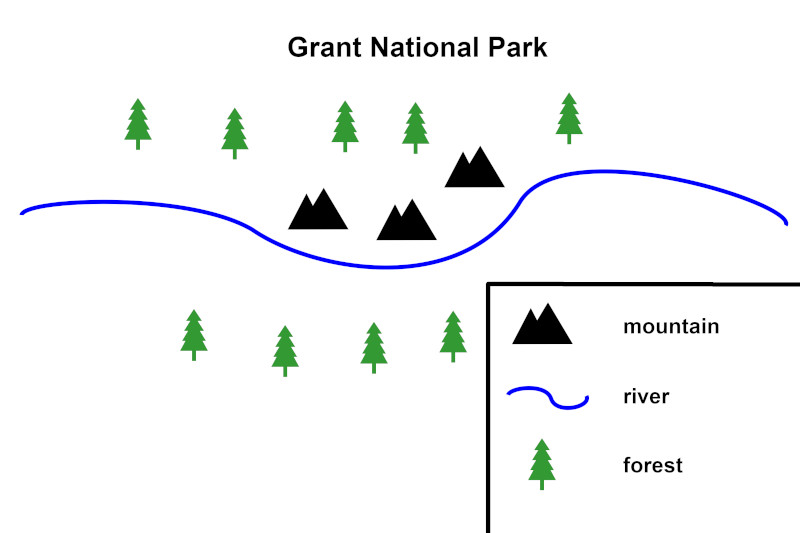
This map shows mountain symbols above a river symbol. Suppose that, in the part of the world that the map represents, there really are mountains in the location that the map indicates. But suppose that there are also mountains on the other side of the river — where no mountains are indicated on the map. Would we say that the map is inaccurate?
People tend to say yes — in general, if a marker appears on a map, then we tend to think that the absence of the marker reflects an absence of that feature from the corresponding location.
But this is very different from linguistic representation. “After all,” writes Rutgers philosopher Ben Bronner, “if I say that there are mountains north of the river, the accuracy of my assertion doesn’t depend on whether there are mountains south of the river.”
And suppose I drew a map on which some national capitals were indicated, but not all. We wouldn’t take this to mean that the absent capitals don’t exist, merely that the map is incomplete. So how can we make sense of the intuition?
(Ben Bronner, “Maps and Absent Symbols,” Australasian Journal of Philosophy 93:1 [2015], pp. 43-59.)
